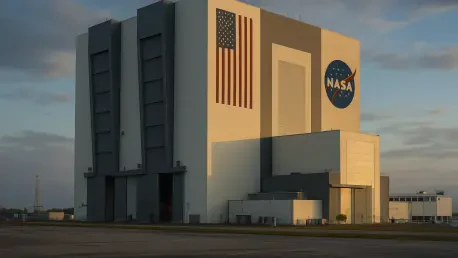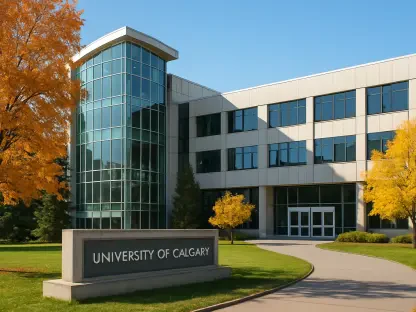Imagine a classroom where students aren’t just reading about the Moon or distant planets but are actively engaged in experiments tied to real missions that aim to return humans to lunar soil, transforming learning into an exciting journey of discovery. NASA makes this vision a reality with an unparalleled array of STEM (Science, Technology, Engineering, and Mathematics) resources that captivate educators and students alike. From unraveling the complexities of Earth’s climate to exploring the potential of silent supersonic flights, NASA’s educational tools are crafted to spark curiosity and nurture a deep-seated passion for discovery. This article explores the breadth of NASA’s initiatives, showcasing how they empower learners across various age groups and backgrounds to dive into the wonders of science and envision a future in cutting-edge fields.
Empowering Education with Innovative Tools
Transforming K-12 Classrooms
NASA’s wealth of resources for K-12 educators stands as a transformative force, turning abstract scientific concepts into tangible, engaging experiences. Tailored lesson plans, hands-on activities, and rich multimedia content cover a spectrum of topics, from the intricacies of aeronautics to the vastness of space exploration through the Artemis missions, which focus on lunar return. These materials enable teachers to bridge the gap between textbook theory and real-world application, allowing students to grasp the significance of ongoing scientific endeavors. By integrating mission-driven content, NASA ensures that young learners see the direct relevance of their studies, fostering a sense of connection to humanity’s broader quest for knowledge. This approach not only enhances comprehension but also inspires a generation to think critically about their role in shaping the future of exploration.
The impact of NASA’s K-12 resources extends beyond mere information delivery, emphasizing active participation as a core component of learning. Students can engage in experiments that mirror actual scientific processes, such as simulating lunar conditions or analyzing climate data akin to what researchers study on a global scale. This practical focus helps demystify complex subjects like heliophysics or Earth science, making them accessible to younger audiences. Furthermore, educators benefit from structured guides that align with curriculum standards, ensuring seamless integration into classroom settings. By equipping teachers with these tools, NASA cultivates an environment where curiosity drives inquiry, encouraging students to ask bold questions and seek innovative solutions to challenges that mirror those faced by scientists today.
Linking Learning to Current Missions
A hallmark of NASA’s educational strategy is the seamless integration of real-time missions into its learning materials, ensuring relevance to contemporary scientific challenges. Projects like the Quesst mission, which explores the X-59 aircraft’s ability to reduce sonic booms, provide a dynamic context for students to study aerodynamics and engineering principles. Similarly, resources tied to climate studies offer insights into data collected from satellites and ground campaigns, reflecting urgent global issues. This alignment with active research keeps educational content fresh and compelling, allowing learners to engage with science as it unfolds. Such an approach underscores the immediacy of STEM fields, showing students that their education directly connects to groundbreaking advancements.
Beyond individual missions, NASA’s focus on current events fosters a deeper understanding of science as a living, evolving discipline. Educational tools related to International Space Station (ISS) activities or lunar exploration through Artemis provide a window into ongoing human endeavors in space. Students and educators can explore how these missions address real-world problems, from sustainable living in harsh environments to technological innovations for Earth applications. This connection to active projects not only enhances the learning experience but also highlights the practical implications of STEM knowledge. By grounding education in the present, NASA ensures that learners appreciate the urgency and excitement of scientific discovery, preparing them to tackle future challenges with informed perspectives.
Fostering Community Involvement and Diversity
Encouraging Global Participation Through Events
NASA’s commitment to public engagement shines through its array of events and citizen science programs, inviting people worldwide to contribute to meaningful research. Initiatives like International Observe the Moon Night create a shared moment of wonder, uniting individuals across continents to gaze at the lunar surface and learn about its significance. Similarly, the NASA Space Apps Challenge serves as a global platform where innovators collaborate to solve real challenges using open data provided by the agency. These events transcend geographical boundaries, fostering a collective spirit of exploration and demonstrating that science thrives on diverse contributions. By opening these opportunities to all, NASA reinforces the idea that everyone has a role in advancing human understanding.
Citizen science projects further amplify this ethos of inclusion, with programs like NASA Response Mappers engaging communities in data collection during critical times such as hurricane season. Participants use tools like the GLOBE Observer to document land cover changes, directly aiding researchers in understanding environmental impacts. This hands-on involvement transforms passive learners into active contributors, deepening their appreciation for scientific processes. Such initiatives highlight NASA’s dedication to making research a communal effort, where every observation or data point shared by the public adds value to larger studies. Through these programs, the agency builds a network of engaged citizens who feel empowered to play a part in shaping scientific outcomes, regardless of their background or expertise.
Breaking Barriers with Inclusive Resources
Inclusivity lies at the heart of NASA’s educational outreach, ensuring that STEM learning is accessible to diverse audiences regardless of language or location. By offering materials in Spanish, the agency reaches non-English-speaking communities, breaking down linguistic barriers and inviting broader participation. Additionally, resources tailored for international audiences reflect a commitment to global education, making NASA’s content relevant across cultural contexts. This dedication to accessibility ensures that the excitement of space exploration and scientific discovery resonates with learners everywhere, reinforcing the universal appeal of STEM fields. Such efforts demonstrate a nuanced understanding of the varied needs within the global learning community.
Partnerships with museums and informal education programs further extend NASA’s reach, bringing its content into non-traditional settings where curiosity often flourishes. Through alliances like the Museum and Informal Education (MIE) Alliance and competitive grants such as TEAM II, the agency connects with communities outside conventional classrooms. These collaborations create environments where families, hobbyists, and casual learners can engage with NASA’s missions, from exploring solar eclipses to understanding the physics of flight. By embedding STEM education in everyday spaces, NASA ensures that inspiration is not confined to academic walls but permeates public life. This approach broadens the impact of scientific learning, cultivating a society where knowledge and wonder are accessible to all who seek them.
Inspiring the Next Generation of Innovators
Paving Pathways to STEM Careers
NASA plays a pivotal role in shaping the future workforce by offering career development opportunities that inspire students to pursue paths in STEM fields. Virtual events like the Career Connection provide a window into professions such as aerospace engineering and materials science, showcasing the diverse roles that drive NASA’s missions forward. These sessions connect learners with industry experts, offering insights into the skills and dedication required to contribute to groundbreaking projects. By highlighting tangible career paths, NASA helps young minds envision themselves as part of the agency’s legacy, turning abstract dreams into achievable goals. This focus on professional growth bridges the gap between education and real-world application, motivating students to take their first steps toward impactful careers.
Beyond virtual engagements, NASA’s emphasis on mentorship and exposure to cutting-edge fields sets it apart as a catalyst for innovation. Programs that spotlight current missions, like the Artemis initiative, allow students to see the direct link between their studies and future opportunities in space exploration. Events designed to discuss roles in mission planning or technology development provide a glimpse into the collaborative nature of scientific progress. This exposure not only demystifies complex career fields but also instills confidence in aspiring professionals to pursue challenging yet rewarding paths. By fostering these connections, NASA ensures that the next generation is equipped with both inspiration and practical knowledge to navigate the evolving landscape of STEM industries.
Engaging Volunteers in Historic Missions
NASA’s call for volunteers to support missions like Artemis II exemplifies its innovative approach to involving the public in history-making endeavors. By inviting individuals to assist with tasks such as tracking capabilities, the agency offers a unique chance to contribute directly to lunar exploration efforts. This hands-on participation transforms volunteers into active stakeholders in NASA’s goals, providing a profound sense of ownership over scientific milestones. Such opportunities are especially impactful for students, who gain firsthand experience in mission logistics and teamwork, skills that are invaluable in any professional setting. This initiative underscores NASA’s belief in the power of community involvement to drive progress.
The volunteer programs also serve as a powerful educational tool, blending learning with real-world impact in a way that traditional classrooms often cannot match. Participants engage with the complexities of mission support, from data analysis to operational planning, gaining insights into the meticulous nature of space exploration. This experience not only enriches their understanding of STEM disciplines but also highlights the importance of collective effort in achieving ambitious goals. By opening these roles to a wide audience, NASA democratizes access to once-in-a-lifetime opportunities, ensuring that diverse perspectives contribute to its missions. Reflecting on past efforts, these initiatives have proven instrumental in building a foundation of public support and enthusiasm that continues to propel the agency’s vision forward.









